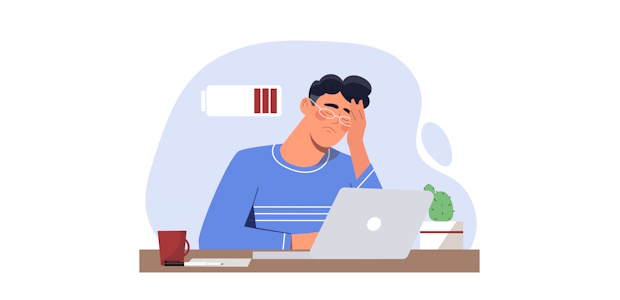
Workplace wellness is a lie and everyone knows it
Let’s stop pretending that your weekly corporate Zoom yoga is fixing burnout. Your company rolls out meditation apps, hosts mental health webinars, and maybe even throws in a mindfulness day once a quarter. All under the banner of ‘employee wellness’. Meanwhile, the calendar is still packed with back-to-back meetings, Slack never sleeps, and your team’s average workday just bled into their evening…again.
You’ve convinced yourself this is support. Your HR deck says, ‘We care’. But what you’ve really built is a wellness mirage, a feel-good smokescreen that hides the fact that nothing has actually changed.
And everyone knows it.
The big ugly truth
By 2026, corporate spending on employee wellness is projected to hit $94.6 billion globally. That’s an absurd amount of money being poured into branded stress management, therapy stipends, mindfulness subscriptions, gamified gratitude apps, and ‘digital wellness experiences’.
And yet, burnout costs employers up to $190 billion a year in healthcare spending alone. That’s the price of ignoring the root causes while throwing money at wellness perks that don’t fix the problem.
So, what exactly are we solving?
We’ve built a system where executives pat themselves on the back for offering a Headspace login, while the same employees using it are still working 12-hour days under outdated expectations.
These tools are easy. That’s why they get deployed.
They’re scalable: easy to roll out across thousands of employees. They’re standardised: plug-and-play. Most importantly, they don’t challenge the way companies operate. There’s no hard look at workloads, no shift in how performance is measured, and no rethinking meeting culture.
There’s no threat to the status quo. They let companies say, ‘We’re doing something’, without actually doing the thing that matters: redesigning the work itself.
The real causes are right in front of us
Let’s stop diagnosing surface symptoms and start calling out the root causes. Burnout isn’t a mystery. It’s built into how most companies are run.
Overwork is still the default setting, only now it’s dressed in the language of ‘flexibility’ and ‘autonomy’. Employees are told they can ‘own their schedule’, but what that really means is they’re just expected to stretch their workday across more hours, more devices, and more personal time.
At the same time, the lines between work and life have become blurred and eventually erased. Too many companies were quick to adopt digital tools for remote or hybrid work without any plan for digital discipline. There’s no cutoff, no expectation of true disconnection.
If you don’t respond at night, you’re ‘not aligned’. If you miss a Slack message during lunch, someone circles back with a passive-aggressive ‘Just checking in again :)’, the modern-day equivalent of a guilt trip in emoji form.
And let’s not forget focus, or rather, the complete lack of it. Most people are burning out because of the way work is done. Constant context-switching, back-to-back video calls, and chat messages every three minutes. People are stuck in a loop of performative productivity, pretending to work while doing almost nothing meaningful.
Fixing this doesn’t always mean throwing more wellness perks into the mix, but rebuilding systems that don’t siphon energy and attention by design. That kind of change comes from the management team. It’s messy, it’s uncomfortable, and, perhaps most threatening of all to the leadership class, it’s personal.
Carewashing is the new corporate theatre
The truth is, most companies would rather look like they care than actually change. And there’s a name for that: carewashing. It's when companies perform empathy without showing it in practice. They offer therapy stipends while idolising hustle culture. They preach self-care on their social platforms and then roll out productivity-tracking software in the same breath.
But carewashing is all safe. It doesn’t require any introspection or hard decisions. It lets companies say, ‘We care’, without ever having to prove it. And at some point, no amount of mindfulness webinars or burnout workshops can cover that up, because employees aren’t fooled. They can feel the disconnect between the company’s messaging and its actions, and that dissonance breeds cynicism and kills trust.
People aren’t leaving companies because they didn’t get a Calm app subscription, but they’re leaving because the entire system tells them: your time, energy, and boundaries are negotiable, especially when there's a deadline.
Real change is structural
Real wellness doesn’t come from slogans or surface-level perks; it comes from redesigning work itself.
That means rethinking how time is spent, how communication happens, and how leadership models behaviour. It means examining how work is measured, how meetings are run, whether async workflows are respected, and what behaviours are rewarded. Building a sustainable culture takes effort. It’s not about adopting the language of well-being; it’s about doing the actual work to make it real. And that’s where many leaders hesitate, because it asks them to release control, examine their own habits, and be accountable for change.
But believe it or not, employees aren’t even asking for that much.
What do employees actually want, you ask? It’s not kombucha on tap or corporate retreats in Bali (although they’re pretty nice to have). It’s time, space, and trust. Work-life balance and flexibility, and right now, most companies are failing to meet them.
In fact, one in four employees would sacrifice 15% of their annual salary for flexible working hours. Employers should understand that that’s not a perk request but a glaring red flag. That’s people saying, “I’d rather make less money if it means I can actually breathe.”
The return on fixing the root causes of burnout is clear: healthier teams, fewer sick days, lower team turnover, and real gains in mental well-being. However, you won’t unlock any of it by launching another wellness campaign or sending out a monthly newsletter about self-care. The only way forward is to rethink how work is structured and understood in the first place, not how you patch things up after the damage is done.

